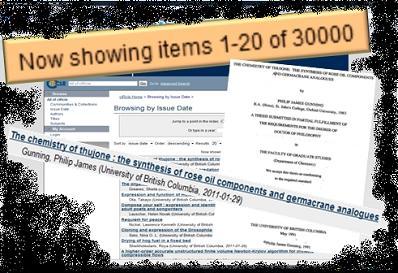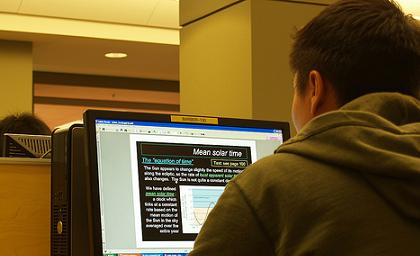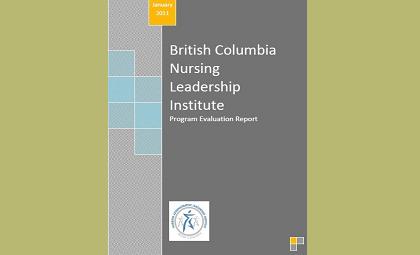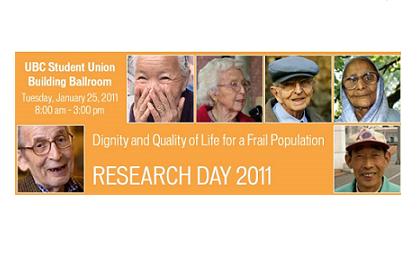The 30,000th item was added to cIRcle, UBC’s Digital Repository!
Title: The chemistry of thujone : the synthesis of rose oil components and germacrane analogues /
Author: Gunning, Philip James / Degree: Doctor of Philosophy – PhD / Program: Chemistry / Date: 1991
Abstract: This thesis is concerned with the synthesis of natural products from thujone (1), a readily available starting material obtained from Western red cedar. The first part of this study investigates the synthesis of the commercially important fragrances, (β-damascone (8) and β-damascenone (24), which are components of rose oil. Thujone can be efficiently converted to the dimethylated thujone derivative 59 in a two step alkylation process. After the formation of the trimethylsilyl cyanohydrins, 77 and 78, the cyclopropane and isopropyl functionalities were cleaved to give the ketone 103. Further elaboration of 103 gave the key intermediates, 127 and 128. The unsaturated nitriles 128 and 127 can be converted to 8 and 24, respectively, by a reduction to the corresponding aldehydes followed by a Grignard reaction to attach the side-chain and subsequent oxidation. As a model study for the synthesis of 8 and 24 from a cyclohexanone derivative, the nitriles 127 and 128 were efficiently synthesised, in 81% overall yield, from 2,2,6-trimethylcyclohexanone. Formation of the cyanohydrins 149 and 150 was followed by consecutive ‘trans’ and ‘cis’ eliminations to give the nitrile 128. The nitrile 127 was produced from 128 by allylic bromination, followed by hydrolysis and dehydration. A conversion of thujone into the ketone 179, using bromine to effect cyclopropane ring-opening, was also studied. The second part of this study investigates the synthesis of ten-membered rings via a photo-induced oxidative cleavage of the alcohols 245 and 265. Treatment of 245 with lead tetraacetate under ultraviolet irradiation afforded, as the main isolated product, the ten-membered carbocycle 246. Treatment of 265 with iodobenzene diacetate under ultraviolet irradiation afforded, as the main isolated product, the bicyclic alcohol 297.
So far, this item has had the following activity (note: click on the “Show Statistical Information“ link on the item page in cIRcle):
- Page displays (12)
- File Downloads (8)
- Top Country Views from Canada (4), United States of America (4), United Kingdom (1), and the Russian Federation (1)
Want to search and/or access more UBC Theses and Dissertations items? Click here.
Questions about accessing UBC and non-UBC theses and dissertations? Click here.
Uploading your UBC thesis or dissertation to cIRcle? Click here for instructions.





